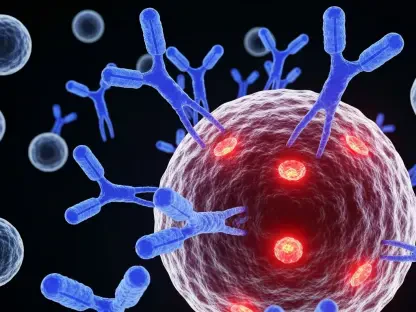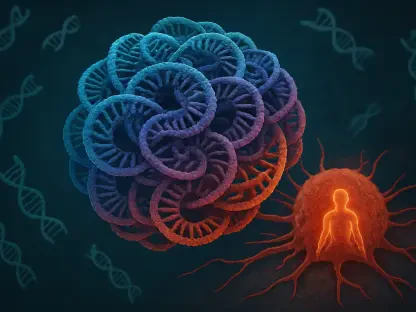Recent preclinical studies offer a glimmer of hope for millions battling formidable solid tumors. Nagoya University’s breakthrough work in CAR-T cell therapy, focusing on the Eva1 protein, presents a potential paradigm shift. Amidst rising global cancer rates, these developments could redefine therapeutic approaches and boost clinical outcomes for patients worldwide.
Current State of Solid Tumor Therapies
The treatment landscape for solid tumors has evolved significantly, marked by a blend of conventional and innovative therapies. Chemotherapy, radiotherapy, and surgical interventions remain integral, often augmented by precision medicine and targeted approaches. Key players in the oncology field tirelessly work toward refining these treatments, driven by technological advancements and regulatory measures. Despite strides in personalized therapies, challenges persist, spurred by the heterogeneous and immune-resistant nature of solid tumors.
Advances in CAR-T Cell Therapy
Innovations and Trends
CAR-T cell therapy has made significant leaps, particularly in targeting solid tumors. Innovations like the development of humanized antibodies are paving the way for attacking surface proteins such as Eva1. With advancements in genetic engineering and cutting-edge scientific methodologies, CAR-T cells are evolving to precisely target cancerous tissues. Enabled by partnerships between academia and biotech companies, opportunities abound for expanding these approaches to diversify cancer treatment modalities.
Market Projections and Growth
The CAR-T cell therapy market is poised for notable growth. Detailed forecasts indicate robust expansion, with projections suggesting extensive therapeutic impact. The treatment of solid tumors is expected to benefit significantly from CAR-T advancements, translating into enhanced market dynamics and increasing healthcare investments. As companies and research institutions continue to invest, the future of CAR-T therapies appears promising, steering the industry toward transformative breakthroughs.
Challenges in Targeting Solid Tumors
Targeting solid tumors with CAR-T cells presents unique obstacles. Biological complexities and immune resistance can impede therapy effectiveness, coupled with technological hurdles and regulatory constraints. Strategies to mitigate these issues involve optimizing CAR constructs and addressing safety profiles while navigating stringent clinical testing requirements. Collaborative efforts are crucial to surmount these challenges, ensuring both efficacy and safety in therapeutic development.
Regulatory Considerations
The regulatory framework governing CAR-T therapies is intricate yet crucial. Laws and standards heavily influence development pathways, requiring rigorous adherence to safety and efficacy protocols. Security measures play a pivotal role in safeguarding therapeutic practices, from drug approval processes to clinical trials. Regulations serve not only as a guiding force but also as a catalyst for innovative solutions, fostering a secure environment for therapeutic progress.
Future of Solid Tumor Therapy
The trajectory of solid tumor therapy lies within innovation and regulation synergy. Technological advancements, evolving regulations, and global economic conditions shape the industry’s future direction. As CAR-T therapies mature, they are set to redefine oncology treatments, creating prospects for improved patient outcomes. These factors underscore the evolving landscape, emphasizing the potential for groundbreaking advancements in cancer care.
Conclusion
The findings from Nagoya University’s preclinical study on Eva1-targeted CAR-T cells lay the groundwork for new treatment possibilities. By demonstrating tumor elimination efficacy and specificity for malignant cells, it provides a strong case for moving beyond traditional therapies into more targeted approaches. While promising, further development is necessary for clinical integration. Continued research, collaboration, and innovation are imperative to harness the full potential, making strides in the fight against solid tumors and ultimately extending hope to those battling deadly forms of cancer.









